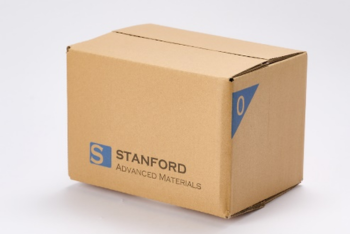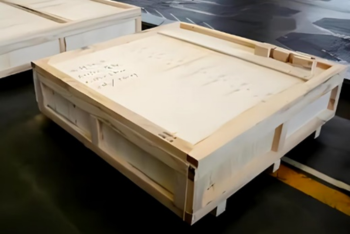

Stanford Advanced Materials (SAM) offers high-quality Spherical Ti-based Powder Ti-6Al-4V ELI, engineered for precision and durability. Known for its low thermal expansion, soft magnetic properties, and corrosion resistance, this premium powder is ideal for demanding applications in industries like aerospace, electronics, and precision instrumentation.
Related products:TiZrHfVNb High-Entropy Alloy (HEA) Spherical Powder, CoCrFeNiCu High-Entropy Alloy (HEA) Spherical Powder




Stanford Advanced Materials (SAM) offers high-quality Spherical Ti-based Powder Ti-6Al-4V ELI, engineered for precision and durability. Known for its low thermal expansion, soft magnetic properties, and corrosion resistance, this premium powder is ideal for demanding applications in industries like aerospace, electronics, and precision instrumentation.
Related products:TiZrHfVNb High-Entropy Alloy (HEA) Spherical Powder, CoCrFeNiCu High-Entropy Alloy (HEA) Spherical Powder




Spherical Ti-based Powder Ti-6Al-4V ELI is a titanium alloy powder primarily composed of 90% titanium (Ti), 6% aluminum (Al), and 4% vanadium (V). The "ELI" (Extra Low Interstitial) designation indicates that the powder has lower levels of impurities like oxygen, nitrogen, and carbon, which improves its ductility, biocompatibility, and overall mechanical performance.
Ti-6Al-4V ELI (also called Grade 23 titanium or TC4 ELI) is a purer form of Ti-6Al-4V. This special alloy offers high strength while being lightweight. It resists corrosion well and has excellent toughness. These properties make it perfect for medical, aerospace, and industrial uses. It is particularly suited for additive manufacturing (3D printing) and powder metallurgy processes due to its spherical powder shape, which provides optimal flowability and uniform deposition.
|
Grade |
Ti-6Al-4V ELI, TC4 ELI |
|
Composition |
Titanium, Aluminum, Vanadium |
|
Particle Size |
15-53 μm, 45-105 μm, or customized |
|
Appearance |
Grey powder |
|
Apparent Density |
2.5-3.5 g/cm3 |
|
Melting Point |
~1600℃ |
Theoretical Chemical Composition
|
Element |
Ti |
Al |
V |
Fe |
O |
|
% |
Bal. |
5.5-6.75 |
3.5-4.5 |
<0.25 |
<0.13 |
Mechanical Properties:
|
Property |
Ti-6Al-4V ELI |
|
|
Tensile Strength (MPa) |
≥895 |
≥825 |
|
Yield Strength (MPa) |
≥825 |
≥760 |
|
Elongation (%) |
≥10 |
≥15 |
|
Reduction of Area (%) |
≥25 |
≥30 |
|
Fracture Toughness (MPa√m) |
55–60 |
65–70 |
|
Fatigue Limit (10⁷ cycles, MPa) |
500–550 |
450–500 |
|
Hardness (HV) |
330–360 |
310–340 |
|
Impact Toughness (J/cm²) |
25–35 |
35–45 |
Physical Properties:
|
Property |
Ti-6Al-4V (Standard) |
Ti-6Al-4V ELI |
|
Density (g/cm³) |
4.43 |
4.42 |
|
Melting Range (°C) |
1604–1660 |
1604–1660 |
|
Thermal Conductivity (W/m·K) |
7.2 |
7.1 |
|
Specific Heat Capacity (J/kg·K) |
560 |
565 |
|
Thermal Expansion Coefficient (10⁻⁶/K) |
8.6 (20–100°C) |
8.7 (20–100°C) |
|
Electrical Resistivity (μΩ·m) |
1.7 |
1.72 |
|
Magnetic Permeability |
1.00005 |
1.00005 |
|
Elastic Modulus (GPa) |
110–114 |
108–112 |
more information: Demystifying Titanium Alloys: Ti 6-4 Grade 5 vs. Ti 23
Our products are typically packaged in PE (polyethylene) bags to ensure secure containment and prevent contamination. For materials sensitive to moisture or oxidation, we offer vacuum-sealed packaging to maintain product stability and purity. The packaging is customizable based on the product’s quantity and specifications, allowing us to meet specific customer needs.


Packaging: PE Bags, Cartons, or Customized.
Q1. How is Spherical Ti-6Al-4V ELI Powder produced?
Spherical Ti-6Al-4V ELI powder is typically produced using gas atomization or plasma atomization, processes that involve melting the alloy and then rapidly cooling it to form fine spherical particles. These techniques result in high-purity powder with consistent particle size, making it ideal for additive manufacturing.
Q2. For spacecraft structural components, what is the weight reduction of 3D printed Ti-6Al-4V ELI parts compared to traditional forged components?
Through topology optimization design combined with additive manufacturing, SpaceX's Crew Dragon has successfully implemented such components. Typical weight reduction effects:
• Satellite brackets: 40-50% weight reduction
• Rocket engine mounts: 30-35% weight reduction
• Hatch hinges: 25-30% weight reduction
Q3. Why are artificial joint implants specifically required to use the ELI version?
Because:
• Lower oxygen content (<0.13%) reduces cytotoxic reactions
• Higher elongation (≥15%) prevents implant fracture
• Specially treated surface porosity (30-70%) promotes osteoblast growth

